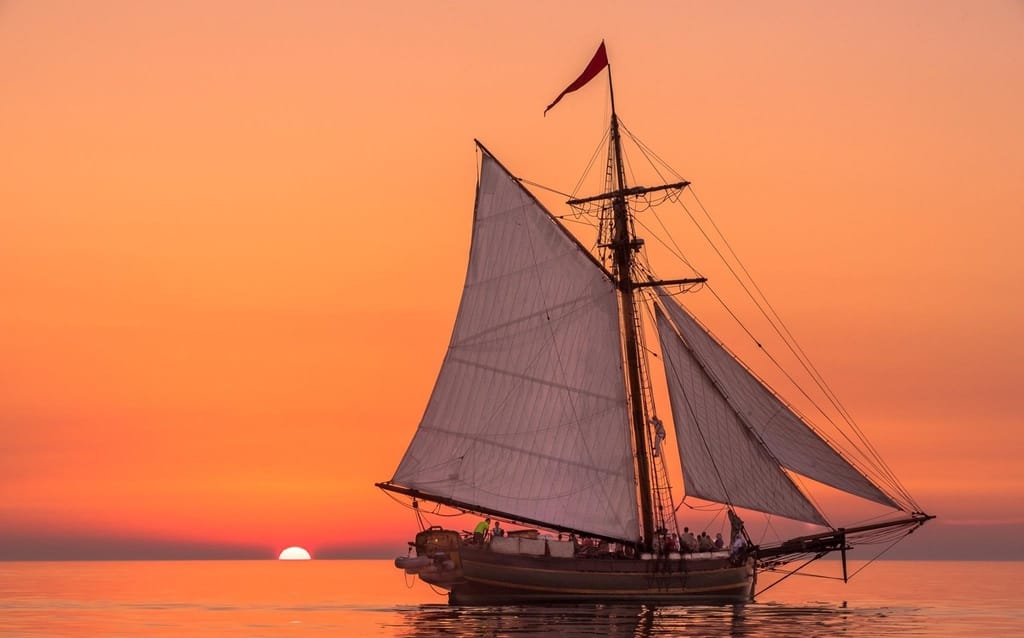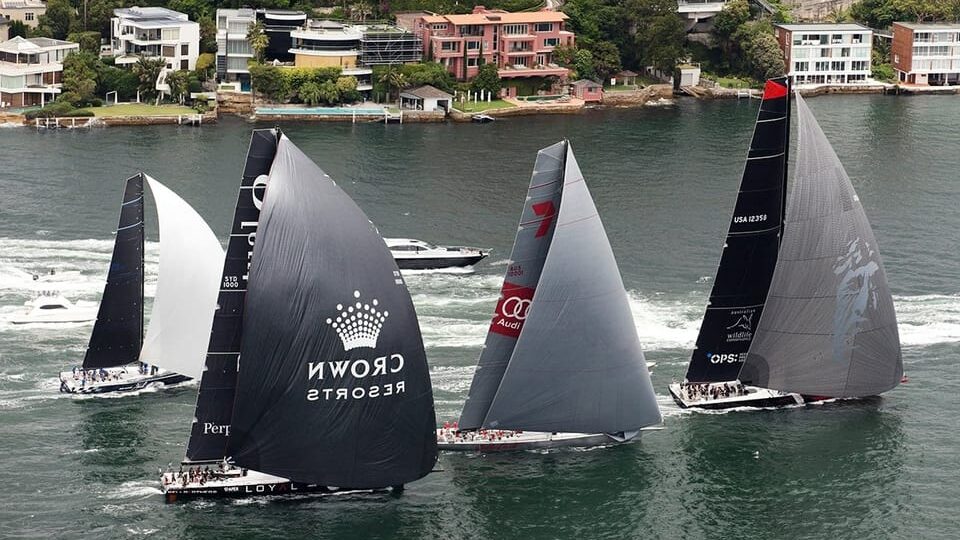How Much Do New Sails Cost?
Purchasing new sails is a big investment for many sailboat owners and a task that you won’t have to make again for a while. There are different choices you can make according to your sailboat. However, with all these offers you have to make sure you don’t make an irreversible mistake. On a cruising boat, sails might seem they can last forever. And, sometimes it’s difficult to say when is the appropriate time to replace them. So, it’s important to change them that the time comes that your old sails can’t propel you upwind off a lee shore and when you need them most. In this article, I will explain some basic things about sails as well as how much do new sails cost. So, keep reading!
Types of Sails
The main types of sails on sailboats include the mainsail, the headsail, or jib, the spinnaker, the gennaker, as well as the genoa. Moreover, there are numerous configurations regarding the type of sail and the mast. These include the sloop rig, the fractional rig sloop, ketch, yawl, cutter, schooner, and cat.
So, basically, each sail has its own unique purpose when out on the water. As you already know, the sail acts like the engine of your sailboat as it is the main source of propulsion. Subsequently, it’s of high importance to be aware of when to use either type of sail and for what reason.
Firstly, the mainsail is by far the most common sail on sailboats, and it is often the first picture that comes to mind when thinking of a sailboat. The mainsail is located behind the mast and attached to the boom, making it a popular part of the sailboat to keep an eye on since it occupies a lot of space.
When it comes to incoming winds, mainsails can cover a lot of surface area, particularly since they’re attached to the boom. They don’t need very strong winds to provide good forward propulsion on a sailboat because of their wide surface area. Furthermore, since the boom allows for easy configuration of the mainsail position, all points of sail are easily accessible. Mizzen on yawls and ketches are examples of mainsails. They’re the main driving force and should have anywhere from one to four reefs mounted.
Since it typically goes with the mainsail, the headsail (or jib) is possibly the second most common type of sail on sailboats. The headsail is often positioned in front of the mast and can cover a significant portion of the sailboat’s bow. It’s much smaller than a mainsail, making it easier to transport and operate with. Since headsails are smaller than mainsails, they have a smaller surface area, which means they can’t catch as much wind as a mainsail. However, if the current wind is particularly strong and your mainsail has been adequately trimmed, you will be able to put your mainsail away and rely solely on your headsail, which is an excellent technique for reducing speed.
Genoas and jibs are examples of foresails that can be found on cutter-rigged vessels. A single roller curling foresail is standard on most vessels. Some, on the other hand, have single-standing sails that come in a variety of shapes and sizes and are tailored for various wind strengths. When the winds are stronger, for example, you can use larger foresails, and when the winds are calm, you can use smaller foresails. Spinnakers are another important type of sails. Asymmetric and symmetric spinnakers, as well as code zeros and cruising chutes, are examples of downwind sails.
There are also storm and heavy weather sails such as storm jibs and trysails that are important for protection. This applies particularly in case you sail offshore frequently and will likely encounter difficult conditions. Given that reefing genoas have incompetent shapes, particularly when heavily reefed in strong winds, a smaller but heavier weather jib is recommended. You can set it as part of a removable inner forestay.
>>Also Read: Names of Sails on a Sailboat
Main Factors that Determine the Costs of Sails
The real cost of sails is determined by a number of factors. But, sail area and sail quality are the two most significant factors. Keep in mind that the sail area is primarily determined by the length of the voyage. Let’s assume that there are three types of sails: budget (motor skipper), mid-priced cruising sails (about right), and value racing sails (high performance).
So, firstly, the sail area refers to the amount of fabric needed for a specific boat. Longer vessels, in general, require larger sails. However, if you use a genoa rather than a standard jib, you’ll need more sail fabric. As for the sail quality, it consists of the materials that make up the sails, the tightness of the weave, and the overall quality of the finish. And keep in mind that when you lower the sail’s quality, you will have to replace them earlier. And, if you plan on holding your boat for half a lifetime this will lead to faster deterioration.
Sail type, as well as sail quality, are quite similar. The main difference is between inshore and offshore use. Meaning that offshore sails are better than inshore sails in terms of cost. Inshore sails, for example, lack strengthened clew patches, less stitching, and no double tapes. The explanation for this is that inshore sails would most likely encounter lighter winds. Moreover, race sails are more expensive than cruising sails for a variety of reasons, the most important of which is that they are not designed to last.
In addition, the number of sails also influences the overall cost of sail replacement. And, keep in mind that the rigging for most regular keelboats consists of a main and jib, but many sailors put more sails in order to improve speed and performance. Moreover, the type of rig determines which designs you can use. A gaff rig, for instance, requires a quadrilateral sail, which increases sail area. If you add a roller furling main and jib, the price jumps significantly.
Damage to your Old Sails
It’s critical to understand the areas of your current sails that are vulnerable to tear and wear while determining their structural strength and damage. Although you should inspect every area of the sails, the inboard batten pocket, leech, and spreader patches should receive special attention. You should also keep in mind that the sun will chafe and damage the stitching on your sails before the material itself. Since new sails are such a large investment, you should think about re-stitching the damaged areas if it means extending the sail’s life. So, how do you know if your stitches are ruined? Simply rub your finger against the stitches. If you can quickly take them out, they’re fragile and need to be re-stitched. It would be best to do it as soon as possible to avoid things getting worse.
Consider inspecting the leech as well in order to see if it’s still functional. Try poking your thumbnail into the weave fabric to accomplish this. If you can poke the weave thread, then it’s probably in poor shape. Don’t omit to inspect batten pockets for any damage or worn-out patches on the sail. And, bear in mind that if it’s not worth the cost to fix or repair your current sails, you should know that they’ve seen their best days.
Keep in mind that the aging process of sails is affected by a number of factors, including the materials used, the type of use they receive, as well as the quality of care. However, estimating the lifetime of your sails based on the number of miles you’ve covered on the water or the number of years you’ve used them is nearly impossible. The most important thing to remember is that the sails’ shapes can gradually shift without your knowledge. As a result, you have to inspect your sails on a regular basis to see if the shapes have changed.
This is a perfect way to evaluate not only the shapes of your sails but also the consistency and handling of new sails. And, obviously, new sails can’t change from good to bad in a moment. They’ll stretch as they get older, which might result in a shift in shape. When your sails lose their form, they also lose their ability to aim correctly, making steering difficult. As a result, your boat will drag, increase heel, and eventually slow down.

>>Also Read: How to Repair Sails On Your Sailboat
Materials and Cloth Weight
Another important factor to consider when purchasing a new sail is the type of sail material. Woven Dacron was the only viable choice for sail material nearly two decades ago. As a result, the only factor to consider in terms of sail material was the woven Dacron’s grade. Sailors had the option of choosing between a more flexible yet stiffer woven Dacron for cruising and a stiff, highly resinated material for sailing. However, due to technological advancements, things have changed lately. Nowadays, there are several different types of sail materials, each with its own set of benefits and drawbacks.
There are some arguments in favor of more modern cruising sail designs and materials. For the same weight, the better the design and material, the lighter the sail will be. Lighter sails are much easier to navigate than large, bulky sails. In addition, sails made of high-quality fabric that are well-built will invariably last longer than sails that are poorly designed. Bear in mind that the design of the sail would better balance the loads in the sail, making it less likely to deform and break down. Value for money isn’t just about the lowest price; it’s also about a much longer lifespan.
Always make certain to inquire about the form, manufacture, and weight of the cloth that is recommended. For cruising sails, woven polyester is the most common and reliable material, but there are others too such as 3Di, Nylon, Aramid, Ultra PE, etc. There are several major fabric manufacturers from which it’s advisable to get at least one quote about your new sails. Sometimes it might suit purchasing unbranded cloth, but you should be mindful of the price and quality options.
Cloth weight is the final challenge since the various units may be confusing. Meaning that grams per square foot, as well as ounces per square yard, are simple enough. But, in some cases, they refer to as ounces per sailmaker’s yard, which is a piece of cloth 28.5 inches wide by 36 inches long in the US. As a result, you must determine if the number is metric, imperial, or American. And, in some cases, the fabric’s brand name will have a weight that has no bearing on the real cloth weight in either of these schemes. While this is a generalization, the heavier cloth should be stronger and last longer, as well as making the sail heavier!
How to Estimate the Cost of your New Sails
So, what you have to do here is estimate the sail area. In order to do that you have to multiply the hull length (in ft) with the surface area ratio. For instance, a boat with LOA under 28ft with a surface area of 15 will have a total sail area of approximately 420 ft2. Of course, this is a very rough estimate, and you should certainly weigh your sails before making your purchase, but it will suffice for a fast cost estimate.
As aforementioned, the costs of new sails will depend on the type of the sailcloth, the design of the sails as well as on the length of your sailboat. It’s important to remember that these are just estimates, but they should give you a good idea of what to expect when purchasing new sails. Getting a quote from different sailmakers is highly advisable as they will guide you through the process. Let’s now see the estimated costs:
Replacing Mainsails on Bermuda Sloop Rigs
- Sailboats measuring 42 ft to 50 ft cost around $2,500-$4,000
- Boats measuring 36 ft to 42 ft cost around $2,000-$3,000
- Sailboats measuring 32 ft to 36 ft cost around $1,500-$2,500
- Boats measuring 24 ft to 32 ft cost around $1,000-$1,500
- Sailboats measuring 18 ft to 24 ft cost around $650-$1,200
Replacing a Jibs and Genoas
- Sailboats measuring 42 ft to 50 ft cost around $5,500-$9,000
- Boats measuring 36 ft to 42 ft cost around $4,000-$7,000
- Sailboats measuring 32 ft to 36 ft cost around $3,000-$5,000
- Boats measuring 24 ft to 32 ft cost around $2,500-$4,000
- Sailboats measuring 18 ft to 24 ft cost around $1,000-$2,500

Useful Tips for Buying New Sails
- Focus on the kind of sailing you’d like to do with your new sails. Most of the sailmaking method is a balancing act between opposing forces. In other words, an easy-to-handle sail isn’t always the most durable, the strongest isn’t always the lightest, and the cheapest isn’t always the most cost-effective. For each boat owner and current situation, the right combination of these variables would be different. And, it won’t only depend on the type and size of the boat, but also on your budget. So, consider what kind of sailing do you do and in which locations/waters. Also, the frequency of your sailing as well as your crew members.
- Gather some information about your boat’s measurements. In case it’s a common design, that should suffice for the sailmaker. If not, you’ll need to take a few basic measurements so the sailmaker can provide you with a precise quote. They may give you a form to fill out with the details they need, or they may come out and measure the boat for you.
- Focus on the sail handling system and keep an eye on the detail. Can you upgrade to roller reefing, or will you go for a cruising chute and launch sock? Following those decisions, you’ll need to decide on sail design, construction, and sailcloth. Keep in mind that there are more complex sail panel layouts, such as bi-radial or tri-radial constructions with strong technical advantages regarding efficiency. However, a quick look at the price list reveals that the more complicated the construction, the more costly it is to make.
- Always compare quotes. Contact various sailmakers to learn the differences between the designs so that you can compare all offers correctly. Comparing a tri-radial sail from one sailmaker to a cross-cut design from another, for example, is pointless. This is because the former should always be more costly. So, make sure you’re aware of the sail’s design. If the sailmaker uses a trade name you don’t understand to describe the panel layout, ask them to clarify whether it’s based on a cross-cut, bi-radial, or tri-radial layout.
How Much Do New Sails Cost on a Sailboat? – The Bottom Line
It is a well-known fact that sails do not last indefinitely. Although it’s difficult to predict how long the sails will last, replacing them before they become heavily stretched and out of shape is crucial. It’ll have to happen sooner or later: you’ll have to replace those priceless sails. Everyone knows it’s pricey, but how much is it exactly? A 24′ Bermuda sloop’s jib and mainsail would normally cost $1,000-$2,500 to replace. Sails for mid-sized boats (34′) usually range from $3,000 to $5,000. Also, the cost varies greatly depending on the LOA, the sailcloth and material, as well as the type of the boat. Keep in mind that the cost also rises as the sail area and hull length grow. I hope that this article will help you through the process of buying your new sails. Wish you all safe & pleasant voyages!
